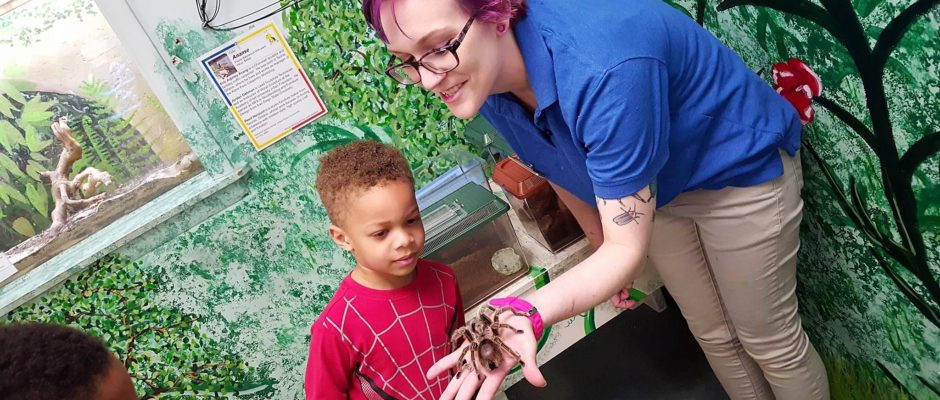For 25 years, the Insectarium in Northeast Philadelphia has delighted visitors – at least the non-squeamish sort – with cockroaches, centipedes, tarantulas and other creepy crawlers. Now the local science museum has new owners, a new mission, all-new exhibits and, since February, a butterfly pavilion.
“The mission of the museum is to teach visitors about the importance of environmental diversity, ecosystem services and biology at all levels,” explains Lauren Darkes, marketing director of the rebranded Philadelphia Insectarium and Butterfly Pavilion (IBP) “We are hoping the museum will serve as an educational beacon in the Northeast and be a driver for economic growth in the surrounding community.”
According to Roadside America, Steve Kanya, owner of Steve’s Bug-Off Exterminating Company, began the museum in 1992 with a storefront fish tank showcasing his “catch of the week.” Kanya eventually expanded the museum into the top two floors of an old firehouse on Frankford Avenue and added other exhibits including a mock cockroach-infested kitchen.
The new IBP occupies that same building, but the cockroach kitchen is no more. The new exhibits are less skeevy and more educational.

“IBP uses insects as a vehicle to teach about life sciences and the ecology of the world around us,” says Darkes. “We are very education-centric and have specific material geared towards kindergarteners all the way up through graduate students… We believe there is beauty in how we teach about science and are always looking for innovative new ways to display educational materials.”
Entomologist John Cambridge learned about the museum while leading science students on research trips during his PhD work at Rutgers University. Cambridge acquired the museum last year and designed the new exhibits, including the new, 7,000-square-foot, $1.2 million butterfly pavilion. Under its polycarbonate roof — which helps maintain a tropical ecosphere — 8,000 butterflies flit among ponds, waterfalls and tropical plants.
We have the world’s largest centipedes (so big that they eat bats!), the most diverse living praying mantis collection on the East Coast, bird-eating tarantulas, Australian stick insects and many more.Lauren Darkes
Other attractions include a live, interactive, walk-through bee hive, giant touchscreens where guests can interact with arthropods ranging from roaches to walking sticks, and a climb-through lizard terrarium for children.
“IBP houses one of the most diverse arthropod zoos in the country,” enthuses Darkes. “We have many rare and exotic species that are not found in any other facilities in the area. These include the world’s largest centipedes (so big that they eat bats!), the most diverse living praying mantis collection on the East Coast, bird-eating tarantulas, Australian stick insects and many more.”
Funding for the for-profit museum comes from school tours, public visits and rentals for special events; the museum plans to welcome 10,000 visitors this year. IBP also manages the educational nonprofit Operation Monarch, which works to save endangered monarch butterflies.
ELISE VIDER is news editor of Keystone Edge.



